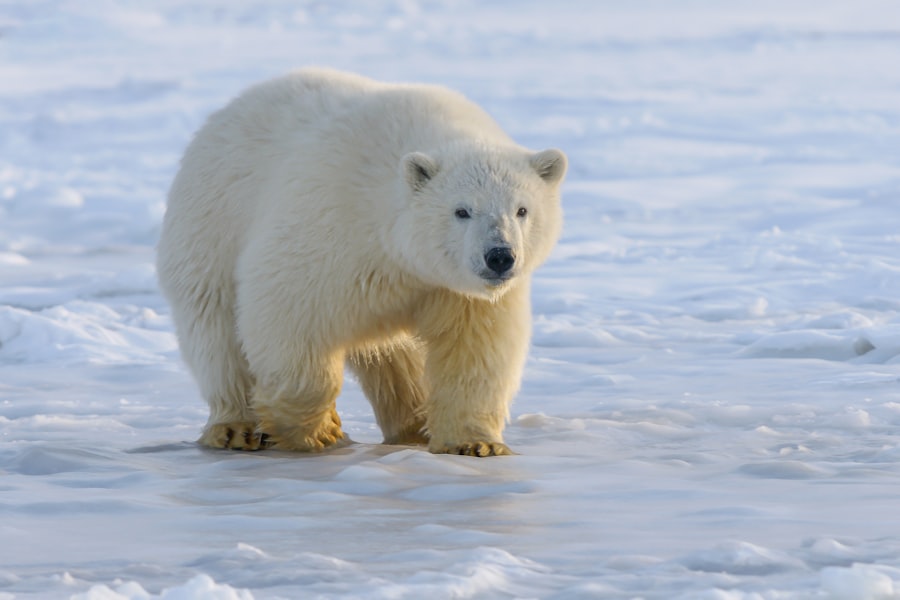The protection of endangered species is not merely an environmental concern; it is a fundamental aspect of maintaining the delicate balance of our planet’s ecosystems. Each species plays a unique role in its habitat, contributing to the intricate web of life that sustains both flora and fauna. When a species becomes endangered, it often signifies a disruption in this balance, which can lead to cascading effects throughout the ecosystem.
For instance, the extinction of a single predator can result in an overpopulation of prey species, which in turn may lead to the depletion of vegetation and the subsequent collapse of the habitat. Thus, protecting endangered species is crucial not only for their survival but also for the health and stability of entire ecosystems. Moreover, the loss of biodiversity has profound implications for human well-being.
Many of the resources we rely on—such as food, medicine, and clean water—are derived from diverse biological systems. The extinction of species can limit our options for sustainable development and hinder our ability to adapt to changing environmental conditions. For example, many pharmaceutical compounds are derived from plants and animals, and the loss of these species could stifle future medical breakthroughs.
Furthermore, biodiversity contributes to ecosystem services such as pollination, soil fertility, and climate regulation, all of which are essential for human survival. Therefore, safeguarding endangered species is not just an ethical obligation; it is a necessity for ensuring a sustainable future for all living beings on Earth.
Key Takeaways
- Protecting endangered species is crucial for maintaining biodiversity and ecosystem balance.
- Threats such as habitat loss, climate change, and poaching are putting many species at risk of extinction.
- Conservation efforts, such as habitat restoration and captive breeding programs, have shown positive impacts on endangered species populations.
- Governments play a key role in enacting and enforcing laws and regulations to protect endangered species and their habitats.
- NGOs and community organizations play a vital role in raising awareness, conducting research, and implementing conservation projects.
- Individuals can contribute to protecting endangered species by supporting conservation organizations, reducing their ecological footprint, and advocating for sustainable practices.
- Urgent action is needed to address the threats facing endangered species and ensure their survival for future generations.
The Threats Facing Endangered Species
Endangered species face a multitude of threats that stem primarily from human activities. Habitat destruction is one of the most significant factors contributing to the decline of many species. As urbanization expands and agricultural practices intensify, natural habitats are fragmented or entirely obliterated, leaving wildlife with fewer places to live and breed.
Deforestation, wetland drainage, and the conversion of grasslands into farmland are just a few examples of how human development encroaches upon the natural world. This loss of habitat not only reduces the available space for endangered species but also isolates populations, making it difficult for them to find mates and maintain genetic diversity. In addition to habitat destruction, climate change poses an escalating threat to endangered species.
As global temperatures rise and weather patterns shift, many species find themselves unable to adapt quickly enough to survive in their changing environments. For instance, polar bears are losing their sea ice habitat due to melting glaciers, while coral reefs are suffering from bleaching events caused by warmer ocean temperatures. These changes can lead to altered food availability and increased competition among species, further exacerbating the challenges faced by those already on the brink of extinction.
The combination of habitat loss and climate change creates a perfect storm that threatens not only individual species but also the ecosystems they inhabit.
Current Conservation Efforts and their Impact

In response to the alarming decline in biodiversity, various conservation efforts have been initiated worldwide, aiming to protect endangered species and their habitats. One prominent approach is the establishment of protected areas, such as national parks and wildlife reserves, which serve as sanctuaries for threatened species. These areas provide safe havens where wildlife can thrive without the pressures of human encroachment.
Additionally, conservation programs often involve habitat restoration projects that aim to rehabilitate degraded ecosystems, allowing them to support diverse plant and animal life once again. Such initiatives have shown promising results; for example, the recovery of the American bald eagle and the gray wolf in certain regions demonstrates that targeted conservation efforts can lead to significant population rebounds. However, while these efforts are commendable, they often face challenges related to funding and public awareness.
Many conservation programs rely on donations and government support, which can fluctuate based on economic conditions or political priorities. Furthermore, raising awareness about the importance of protecting endangered species is crucial for garnering public support and participation in conservation initiatives. Education campaigns that highlight the interconnectedness of all life forms can inspire individuals to take action in their communities.
By fostering a sense of stewardship towards nature, we can create a culture that values biodiversity and recognizes the intrinsic worth of every species.
The Role of Governments in Protecting Endangered Species
| Country | Number of Endangered Species | Legislation in Place | Funding for Conservation |
|---|---|---|---|
| United States | 1,200 | Endangered Species Act | 1.5 billion |
| Australia | 1,800 | Environment Protection and Biodiversity Conservation Act | 500 million |
| Brazil | 1,500 | Brazilian Biodiversity Law | 300 million |
Governments play a pivotal role in the protection of endangered species through legislation, policy-making, and funding for conservation initiatives. International agreements such as the Convention on International Trade in Endangered Species (CITES) exemplify collaborative efforts among nations to regulate trade in endangered wildlife and plants. By establishing legal frameworks that prohibit or restrict the exploitation of threatened species, governments can help mitigate some of the pressures these animals face from poaching and illegal trade.
Additionally, national laws such as the Endangered Species Act in the United States provide mechanisms for identifying at-risk species and implementing recovery plans tailored to their specific needs. However, effective government action requires not only robust legislation but also adequate enforcement mechanisms. In many regions, laws designed to protect endangered species exist on paper but lack the necessary resources or political will for implementation.
Corruption and inadequate funding can hinder enforcement efforts, allowing illegal activities such as poaching and habitat destruction to persist unchecked. Therefore, it is essential for governments to prioritize biodiversity conservation within their agendas and allocate sufficient resources toward protecting endangered species. By fostering collaboration between governmental agencies, local communities, and conservation organizations, we can create a more comprehensive approach to safeguarding our planet’s most vulnerable inhabitants.
The Role of NGOs and Community Organizations in Conservation
Non-governmental organizations (NGOs) and community organizations play an indispensable role in conservation efforts by bridging gaps between governments, local communities, and scientific research. These organizations often operate at grassroots levels, working directly with communities to promote sustainable practices that benefit both people and wildlife. For instance, many NGOs engage in community-based conservation initiatives that empower local populations to take ownership of their natural resources.
By involving communities in decision-making processes and providing education about the importance of biodiversity, these organizations foster a sense of responsibility toward protecting endangered species. Furthermore, NGOs often serve as advocates for policy change at national and international levels. They conduct research that highlights the plight of endangered species and use this data to inform policymakers about necessary actions.
Through campaigns aimed at raising public awareness and mobilizing support for conservation initiatives, NGOs can influence public opinion and drive legislative change. Their ability to connect with diverse stakeholders—from scientists to local residents—enables them to create comprehensive strategies that address both ecological needs and socio-economic realities. In this way, NGOs are vital partners in the global effort to protect endangered species.
How Individuals Can Contribute to Protecting Endangered Species

While large-scale conservation efforts are essential for protecting endangered species, individual actions also play a crucial role in fostering a culture of conservation. Simple lifestyle changes can have a significant impact on reducing one’s ecological footprint and supporting biodiversity. For instance, individuals can choose to reduce their consumption of products linked to habitat destruction—such as palm oil or unsustainable seafood—by opting for certified sustainable alternatives.
Additionally, supporting local conservation organizations through donations or volunteer work can amplify efforts aimed at protecting endangered species within one’s community. Moreover, raising awareness about endangered species is another powerful way individuals can contribute to conservation efforts. By sharing information through social media platforms or engaging in discussions with friends and family about the importance of biodiversity, individuals can inspire others to take action as well.
Participating in local clean-up events or tree-planting initiatives not only benefits local ecosystems but also fosters a sense of community around environmental stewardship. Ultimately, every small action counts; when individuals come together with a shared commitment to protecting endangered species, they create a collective force capable of driving meaningful change.
The Future of Endangered Species and the Need for Urgent Action
The future of endangered species hangs in a precarious balance as human activities continue to exert pressure on natural ecosystems. Without urgent action to address the myriad threats facing these vulnerable populations—ranging from habitat destruction to climate change—the risk of extinction will only increase. The loss of biodiversity not only diminishes our planet’s natural beauty but also undermines essential ecosystem services that support human life.
As stewards of this Earth, we have a moral obligation to act decisively in safeguarding our planet’s rich tapestry of life. To ensure a sustainable future for endangered species, it is imperative that we adopt a multi-faceted approach that includes robust policy frameworks, community engagement, scientific research, and individual action. Governments must prioritize biodiversity conservation within their agendas while NGOs work tirelessly at grassroots levels to implement effective strategies tailored to local contexts.
Simultaneously, individuals must recognize their power as agents of change by making informed choices that support conservation efforts. The time for complacency has passed; urgent action is needed now more than ever if we are to preserve our planet’s irreplaceable wildlife for generations to come.
If you’re interested in learning more about the plight of endangered species and what can be done to help them, I recommend checking out an insightful article on Some Cat Ladies. This article delves into various conservation efforts and highlights the importance of protecting our planet’s diverse wildlife. It’s a great resource for anyone looking to understand more about the challenges these species face and how each of us can contribute to their preservation.
FAQs
What are endangered species?
Endangered species are plant or animal species that are at risk of becoming extinct due to various factors such as habitat loss, climate change, pollution, and poaching.
How many species are currently endangered?
According to the International Union for Conservation of Nature (IUCN), there are over 30,000 species that are currently threatened with extinction.
What are the main causes of species endangerment?
The main causes of species endangerment include habitat destruction, climate change, pollution, overexploitation, and invasive species.
Why is it important to protect endangered species?
Protecting endangered species is important for maintaining biodiversity, ecosystem stability, and the overall health of the planet. Endangered species also have potential benefits for medicine, agriculture, and other human needs.
What are some examples of endangered species?
Some examples of endangered species include the giant panda, the black rhinoceros, the Sumatran orangutan, the leatherback sea turtle, and the Amur leopard.
What can be done to help protect endangered species?
Efforts to protect endangered species include habitat conservation, captive breeding programs, anti-poaching measures, public education, and international cooperation through treaties and agreements.

